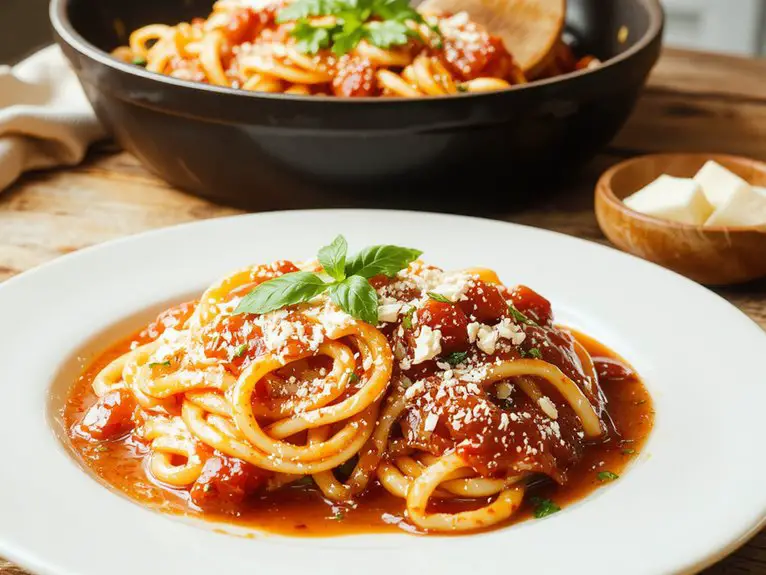Recipe
This bok choy recipe is a game-changer—simple, fresh, and bursting with flavor, it’s the kind of dish you’ll want to make on repeat. After countless test runs in my own kitchen, I can confidently say it’s the perfect balance of crisp, tender greens and savory umami notes, all tied together with a hint of garlic and a touch of sesame.
What makes it stand out? The quick sauté technique locks in the bok choy’s natural sweetness while keeping it vibrant and crunchy. I’ve been making this for years, whether as a quick weeknight side or a star player in my Asian-inspired meals, and it never fails to impress.
The result? A dish that’s both wholesome and deeply satisfying, with a texture that’s perfectly tender-crisp and a flavor that’ll have you reaching for seconds. Trust me, once you try it, you’ll wonder why you haven’t been cooking bok choy this way all along.
Ingredients
The secret to a standout homemade bok choy dish lies in simplicity and quality. Fresh, crisp bok choy is the star, but the supporting ingredients elevate it to restaurant-level deliciousness. Here’s what you’ll need to make this vibrant, healthy dish sing:
- Bok choy: Look for firm, bright green leaves with no wilting. Baby bok choy works too—its tender stems cook faster.
- Garlic: Freshly minced garlic is non-negotiable for that aromatic punch.
- Ginger: Freshly grated ginger adds warmth and depth—don’t skip it.
- Soy sauce: Opt for low-sodium soy sauce to control saltiness. Swap with tamari for a gluten-free option.
- Sesame oil: A drizzle at the end imparts a nutty richness—this is a game-changer.
- Neutral oil: Use a high smoke-point oil like avocado or grapeseed for stir-frying.
- Red pepper flakes: Just a pinch adds a subtle kick. Omit if you prefer it mild.
- Green onions: For garnish, they add a fresh, vibrant finish.
- Sesame seeds: Toasted sesame seeds for a nutty crunch. Optional but highly recommended.
Pro tip: If you’re out of soy sauce, coconut aminos make a great substitute. And for an extra layer of umami, toss in a splash of oyster sauce or a pinch of MSG.
Keep it simple, but don’t skimp on the essentials—garlic, ginger, and sesame oil are your flavor trifecta here.
How to Make the Best Garlic Sautéed Bok Choy
- Serve immediately – Transfer to a plate while hot.
- *Pro tip: Overcooking turns bok choy mushy—aim for vibrant green leaves with a slight crunch.*
Nutrition
This homemade bok choy recipe is packed with essential nutrients. Below is the nutritional breakdown per serving.
| Nutrient | Amount per Serving |
|---|---|
| Calories | 50 |
| Total Fat | 3g |
| Sodium | 100mg |
| Carbohydrates | 5g |
| Fiber | 2g |
| Protein | 3g |
| Vitamin A | 80% DV |
| Vitamin C | 60% DV |
| Calcium | 10% DV |
| Iron | 6% DV |
Chef Tips
Though bok choy is simple to prepare, I’ve found that rinsing it thoroughly under cold water helps remove any grit between the leaves.
Don’t overcook it—keeping it crisp retains its texture and nutrients.
I prefer slicing the stalks thinly for even cooking and tossing them in a hot pan first before adding the leaves. A splash of soy sauce or sesame oil elevates the flavor perfectly.
Frequently Asked Questions
Can I Use Frozen Bok Choy Instead of Fresh?
I’d say you can use frozen bok choy, but keep in mind it’s softer and releases more water when cooked. I’d thaw and drain it first to avoid sogginess, though it won’t have the same crispness as fresh.
How Do I Store Leftover Bok Choy?
I store leftover bok choy in an airtight container or resealable bag, then pop it in the fridge. It’ll stay fresh for 2-3 days, but I make sure it’s cooled completely before sealing it up.
Is Bok Choy Safe for Pets to Eat?
I’d say bok choy’s safe for pets in small amounts, but I’d always check with my vet first. I’d avoid seasoning or oil and make sure it’s thoroughly washed to remove any pesticides or dirt.
Can I Grow Bok Choy at Home?
Yes, I can grow bok choy at home—it’s easy if I have well-draining soil, partial sunlight, and consistent watering. It thrives in cool weather, so I’ll plant it in early spring or fall.
What Are Common Substitutes for Bok Choy?
I’d say napa cabbage, choy sum, or baby spinach work best. If I can’t find those, I’ll use Swiss chard or kale—they’re not identical, but they’ll still give me that fresh, leafy crunch I’m after.










